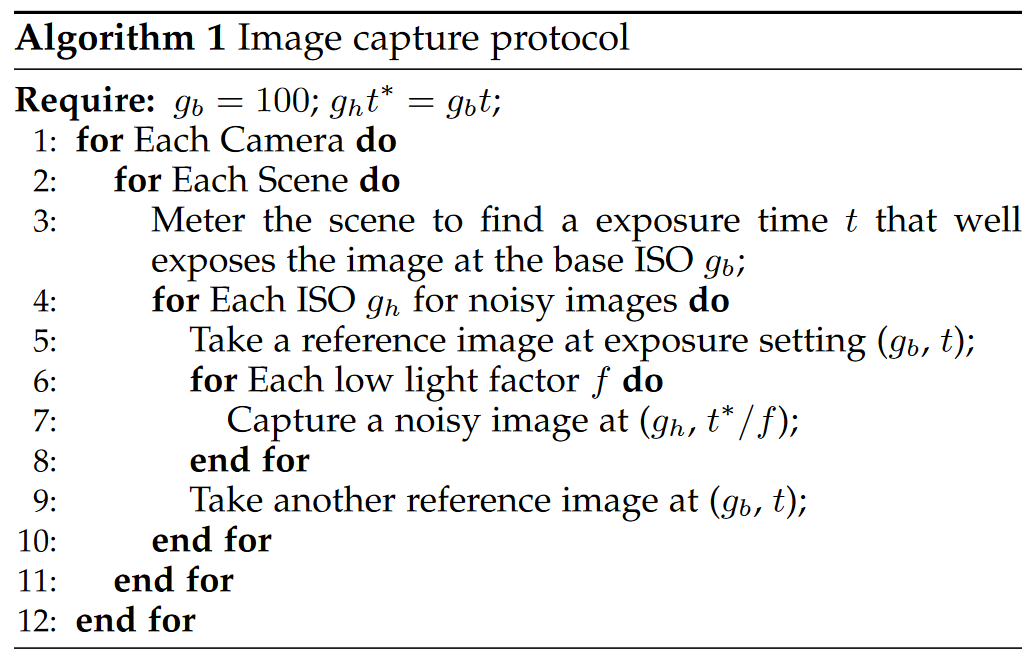Data Collection
To systematically study the generality of the proposed noise formation model, we collect an extreme low-light dataset that covers 10 indoor scenes and 4 camera devices from multiple brands (i.e., SonyA7S2, NikonD850, CanonEOS70D, CanonEOS700D) for benchmarking. We also record bias and flat-field frames for each camera to calibrate our noise model. The data capture setup is shown in Figure 1(a). The camera is mounted on a sturdy optical table and controlled by a remote software to avoid misalignments caused by camera motion, and the scene is illuminated by natural or direct current light sources to avoid flickering effect of alternating current lights. For each scene of a given camera, a reference image at the base ISO was firstly taken, followed by noisy images whose exposure time was deliberately decreased by low light factors f to simulate extreme low light conditions. Another reference image then was taken akin to the first one, to ensure no accidental errors (e.g., drastic illumination change or accidental camera/scene motion) occurred. The detailed procedures are presented in Algorithm 1. We choose three ISO levels (800, 1600, and 3200)5 and two low light factors (100, 200) for noisy images to capture our dataset, resulting in 240 (3×2×10×4) raw image pairs in total. The hardest example in our dataset resembles the image captured at a “pseudo” ISO up to 640000(3200×200).
